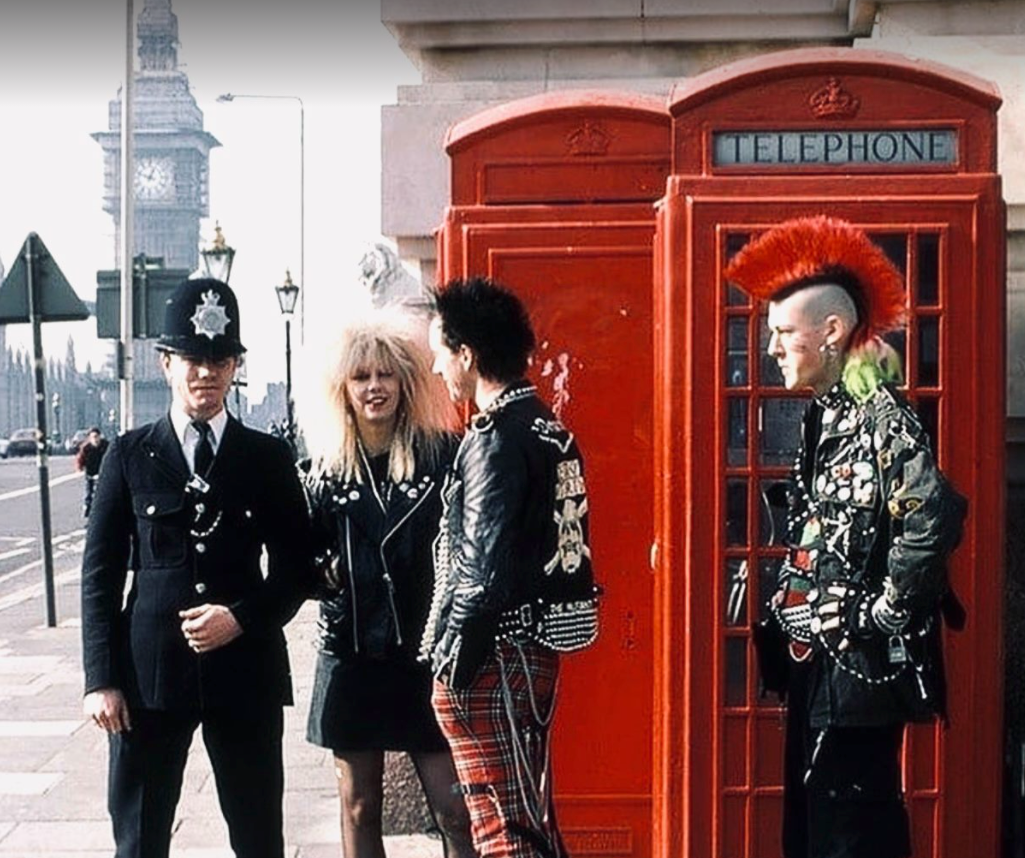Every new fashion is a form of rebellion. -Sidney Poitier
Fashion and social rebellion go hand-in-hand.
Beyond helping us express our identity, clothing has a history of being used by marginalised groups as a signal of resistance. Long before people were dressing as self-styled eshays, emos or hipsters – fashion has been used to signpost interests, social groups and subcultures. Karl Marx defined fashion as a form of ‘social hieroglyphs’ that conveyed information about wealth, education, employment, social status and origins. While current fashion now blurs these conspicuous lines, rebellion in fashion is a constant theme.
Vain trifles as they seem, clothes have, they say, more important offices than to merely keep us warm. They change our view of the world and the world's view of us.
-Virginia Woolf
History is strewn with examples where people have proclaimed their defiance through what they wear. The ‘sans-culottes’ of the late 18th century were people from the lower classes who became the driving force behind the French Revolution. They wore distinctive red ‘liberty’ caps (bonnet rouge) to identify themselves, and their name is a literal translation of 'without breeches'. As urban labourers they wore long trousers, rather than silk knee-breeches of the higher classes, and their clothing came to represent their plebeian solidarity – to themselves, and to the rest of the world.
Suffragettes wore white to symbolise their unity and provide a cohesive identity for their cause, and black continues to be worn as a signal of opposition in Hong Kong when protesting against actions of the Chinese government. During the civil rights movement in America, the black movement adopted ‘Sunday best’ style, presenting themselves as neat, modest and well-dressed to defy the social stereotypes of the era. Adopting a difference approach, the Black Panther uniform consisted of black leather jackets, black pants, shoes and gloves, plus the infamous black beret. A deliberate symbol of militancy to send a message about their uncompromising views and attitude.
Women’s liberation activists in the late 1960s burned their bras (and stockings, girdles and lipstick) and more recently women wore pink ‘pussyhats’ on the Women’s March, a worldwide demonstration the day after President Donald Trump’s inauguration in 2017. The list goes on…but clearly clothing has significant historical role in signalling rebellion by groups who are advocating for political or social change.
However, as Bob Dylan would say, things have changed. Post-Woodstock 1969 is thought to be the time when resistance clothing was first commodified, and corporations such as Levis and Coca Cola began adopting the style of hippies in their mainstream marketing campaigns. Movements such as the punk era adopted anti-fashion extremes to rebel against social norms and conformity (alongside music and protest), but over time there are fewer and fewer fashion rules to rebel against.
It’s a new era in fashion - there are no rules. -Alexander McQueen
Today’s ‘anything goes’ attitude (in predominantly Western societies), means self-expression through fashion is more acceptable and accessible. But this also means that dressing in a way that demonstrates resistance or demands change is much more challenging than ever before. Tweens in Ramones t-shirts from Cotton On is far from a political statement.
Fast fashion is a big part of that picture. There have been discussions about how thrifting has been adopted by Gen Z and millennials as a form of rebellion, signifying a rejection of fast fashion and the values it represents. However, while thrifting has increased (which is great news), unfortunately the fast fashion industry is also booming alongside it.
It’s hard to assess which social movement will define our current times. There is a lot going on… Black Lives Matter, Me Too movement, Feminist Movement, Indigenous Rights, Marriage Equality, LGBTQIA+, Climate Change and more.
Perhaps the way to distinguish yourself in a world with an excess of fast fashion and constant global change is by choosing what not to wear. With an excess of clothing choice, and increased diversity and tolerance for various styles - rebelling against the mainstream means looking a little deeper.
What we can do is make informed decisions about what to buy, what to wear, look at where it came from and how it was made. Find the designers, artists and makers whose values align with our own. Discover and support people who are creating original work and rejecting mainstream business models. Seek out those who are resisting current trends and questioning the status quo of fashion. Inspire others with our choices, and be inspired.
Look for the rebels with a cause.
Photo credit: Punk Press London
